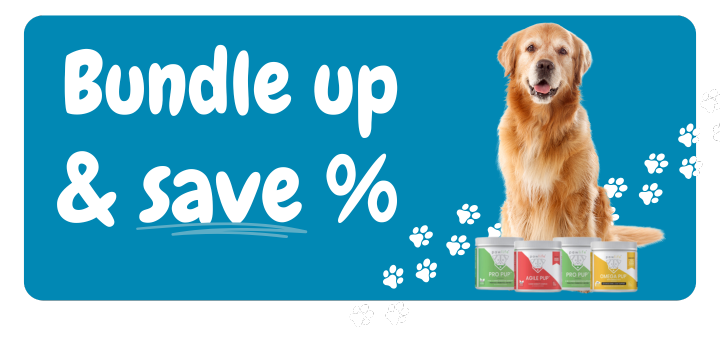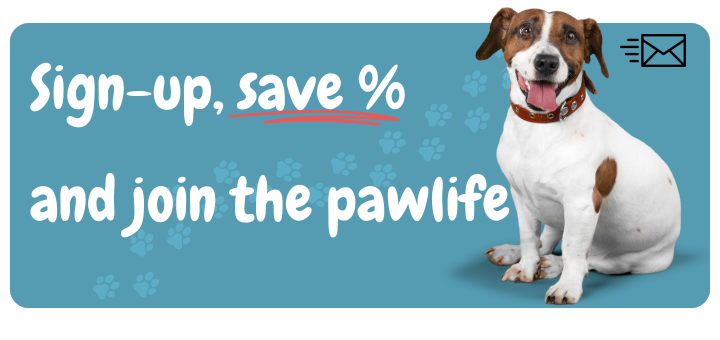Bailey started scratching so much that nap time turned into nonstop fidgeting. The family tried switching shampoos and washing bedding twice a week, yet the itching kept creeping back. A routine checkup ruled out parasites and pointed to irritated skin and seasonal triggers that were difficult to avoid. A simple daily addition—high-quality Wild Alaskan Salmon Oil—became the turning point that gradually soothed Bailey’s skin, brought back a soft, glossy coat, and made cuddle time calm again.
Stories like Bailey’s are common because a dog’s skin barrier is constantly working to protect against allergens, dry air, and environmental stressors. Omega-3 fatty acids give that barrier the nutritional support it needs to function smoothly. Consistent intake helps balance the inflammatory response that drives redness, flakes, and itch, while also feeding the coat so it looks healthy rather than dull. Pet parents often see small but real signs of progress week by week, and momentum builds as the dog’s routine stays steady. A reliable source of omega-3s sets the foundation for comfort that lasts through changing seasons and shifting indoor conditions.
Quality matters as much as consistency when it comes to omegas. The profile of EPA and DHA in marine-based oils makes a measurable difference for skin, coat, joint comfort, and overall vitality. Dogs handle these long-chain omega-3s very well when sourced and stored correctly. That is why the choice of oil, the way it is processed, and how you use it at home all shape the real-world results you see on your pup’s skin and in their daily comfort. The following guide explains what omega-3s actually do, why Wild Alaskan Salmon Oil stands out, and how to integrate it into a routine in a way that is simple to follow and easy to sustain.

Omega-3 Basics: What They Are and Why Your Dog Needs Them
Omega-3 fatty acids are essential nutrients that a dog’s body cannot make in adequate amounts, so they must come through the diet. EPA (eicosapentaenoic acid) and DHA (docosahexaenoic acid) are the marine-based omega-3s most associated with a healthy inflammatory response, skin barrier support, and coat quality. A balanced intake of these nutrients can help calm the cycle that drives itchy hotspots, flaky patches, and a dull appearance. The same fatty acids also nourish cell membranes throughout the body, which supports joint comfort, heart wellness, and cognitive function over time.
Many commercial diets contain more omega-6 than omega-3, which can tilt the dietary balance. Omega-6 is not the enemy since it plays an important role in skin structure and other processes, yet the ratio matters for comfortable skin and a shiny coat. Bringing in a consistent source of EPA and DHA helps bring that ratio back toward balance. Pet parents often notice that regular brushing becomes more rewarding because the coat feels softer and sheds more cleanly. The long-term payoff shows up in routine comfort during activities, better tolerance of seasonal shifts, and a more resilient skin barrier when life gets hectic.
Not all omega-3 sources are equally effective for dogs. Plant-based ALA (alpha-linolenic acid) can contribute, yet conversion to EPA and DHA is limited in canines, so relying on it alone rarely covers what the body needs for targeted skin and coat benefits. Marine-derived EPA and DHA are ready to use. This is one reason why a clean, traceable salmon oil can be such a practical tool for day-to-day care. It slips easily into mealtime, tastes great to most dogs, and consistently delivers the forms of omega-3 that actually move the needle on skin comfort and coat appearance.

Why Wild Alaskan Salmon Oil Rises Above Generic Fish Oil
Source drives quality in fish oils, and wild Alaskan salmon live in cold, clean waters with robust natural diets. That creates an omega profile prized for pet wellness, with EPA and DHA that support skin, coat, joints, and beyond. A thoughtfully produced salmon oil respects that natural profile and preserves it through careful handling. Heat, oxygen, and light can degrade delicate fatty acids, so reputable salmon oil leans on protective processing and packaging to keep the oil stable until it reaches your dog’s bowl. Attention to freshness shows up in the taste, scent, and visible results you see across several weeks of use.
Generic fish oil often blends multiple species and may lack clarity around harvest and handling. Blends are not automatically poor quality; they simply tend to be less specific in their nutrient profile and sourcing story. Pet parents who want a repeatable experience often prefer a single-source oil with a clear route into the bottle. This helps reduce variability and keeps dosing straightforward across refills. Clarity also matters for pet parents who value responsible harvesting and clean inputs, because what is good for the ocean is good for the long game of pet health.
The proof still lives in daily routines. Dogs respond best when the oil tastes good, sits well with meals, and can be measured consistently. A well-made Wild Alaskan Salmon Oil checks those boxes for most pups, which is why so many households stick with it even after initial issues settle down. Consistency fuels benefits, and consistency is easier when your dog looks forward to the flavor and your measuring routine takes seconds instead of minutes. Small wins add up as the coat turns shinier and the itch-scratch cycle fades into the background.

Product Spotlight: Wild Alaskan Salmon Oil for Skin, Coat & Allergy Relief
For a reliable daily source of EPA and DHA, explore Pawlife’s Wild Alaskan Salmon Oil. This ready-to-use oil pairs easily with breakfast or dinner and makes it simple to deliver targeted omega-3 support for the skin and coat. Households that already use omega-rich soft chews can still benefit from a liquid oil because it allows flexible titration for seasons when the air gets dry or pollen runs high. An oil also layers nicely with multivitamins or specialty formulas aimed at digestion, allergies, or mobility. The combination helps address comfort from multiple angles while keeping the daily routine easy for busy families.
If your dog prefers a chew format, consider pairing with Omega Pup for additional skin and coat support. Pet parents who want to cover broader daily bases often add Multi Pup 5-in-1 Multivitamin to reinforce overall wellness. Dogs who struggle with itch tied to environmental triggers may appreciate a complementary solution such as the Calm & Clear Duo for allergy and anxiety relief, or the Soothe & Shine Duo for a focused skin-and-coat plus calming approach. The goal is a gentle stack that supports the barrier on the outside and manages the internal response at the same time.
Shoppers looking to browse across categories can visit the Skin & Coat collection to view complementary options. Each dog brings a unique history, lifestyle, and environment to the table, so the right combination can be tailored to need and preference. Some families prioritize a liquid they can measure to the pound, while others want the simplicity of daily soft chews. Either way, steady omega-3 intake creates the base that makes every other step work better. The more predictable your base, the easier the rest of your plan becomes.

How Omega-3s Team Up With the Skin Barrier to Ease Itch
A healthy skin barrier behaves like a well-sealed wall, keeping moisture inside while reducing the reach of airborne triggers. Omega-3 fatty acids contribute to that barrier by helping maintain flexible cell membranes and moderating inflammatory pathways. The result shows up as less frantic scratching, calmer hot spots, and smoother coat texture. A shiny coat is not merely cosmetic because it hints at improved barrier function below the surface. When the barrier does its job, the body spends less energy reacting to minor irritants and more energy on the day-to-day work of thriving, playing, and resting.
Many dogs face a seasonal cycle that exposes the barrier to dry indoor air and outdoor spikes in pollen. Omega-3s do not erase seasons, yet good intake can soften the peaks and valleys so the dog’s baseline feels more stable. That stability shows up during grooming as fewer flakes in the brush and a silkier feel under your hand. Consistent intake also complements bathing schedules because the coat holds onto moisture better and shampoo routines stay gentler. The small and steady wins of a well-fed skin barrier add up across weeks to deliver better comfort without drama.
Pet parents often ask how long it takes to see visible improvements. Individual timelines vary, yet many households notice early signs by the second to fourth week, with coat appearance tending to lead and itch relief often following. Keeping a simple log of scratching frequency, grooming notes, and photos helps track progress fairly. Clear markers make it easier to decide whether to continue at the current dose, bump slightly within guidance, or add a complementary product for seasonal support. A tiny habit like note-taking makes the process more objective, which helps everyone involved.

Dosing, Timing, and How to Integrate Salmon Oil Into Your Routine
Start with the label guidance on Wild Alaskan Salmon Oil and feed with a meal to support comfortable digestion. Dividing the daily amount between morning and evening can create a steady supply of EPA and DHA, which some families prefer for picky eaters or pups with sensitive stomachs. Gradual increases within suggested ranges are a practical way to fine-tune, especially during high-pollen periods or very dry months. Dogs usually accept the flavor readily, yet a brief transition period can help cautious eaters if the taste is new. The goal is a pleasant ritual that both of you enjoy.
Most households see the best outcomes when salmon oil becomes a non-negotiable part of mealtime. A measured pump or spoonful at the same times each day makes compliance easy and results more predictable. Handy storage by the food prep area acts as a visual reminder that reduces missed doses during busy mornings. Families with multiple dogs can pre-portion for the week in labeled containers if that reduces friction. A little planning at the start removes decision fatigue later and keeps your dog’s omega-3 intake steady across the whole month.
Pet parents who love data can track outcomes with a simple checklist: scratching episodes per day, grooming notes, and coat feel. Keep an eye on stools during the first week and adjust timing or portion slightly if you see changes. Solid routines usually settle quickly, and most dogs handle the oil very well. If your veterinarian is monitoring skin issues, share your observations along with the product label for context. Professional input becomes even more helpful when paired with clear, real-world notes from home because that paints the full picture of your dog’s progress.

Smart Pairings: Build a Gentle Stack for Total Comfort
Comprehensive skin comfort comes from feeding the barrier, calming the inflammatory response, and supporting overall wellness. A clean omega-3 base forms the core, which you can reinforce with targeted additions. For broad daily coverage, Multi Pup 5-in-1 Multivitamin helps fill common gaps so the body has what it needs for routine repair. For dogs who show seasonal itch or environmental sensitivity, the Calm & Clear Duo offers support that aligns well with omega-3s. Many families also like the focused approach of the Soothe & Shine Duo to keep the coat glossy while promoting a calm demeanor.
If your dog’s skin issues seem tied to digestive upsets, bringing the gut back into balance can reduce the stress that shows up on the skin. A healthy microbiome influences the immune system and can make the difference between occasional flakes and recurring annoyance. Consider the Digestion collection to explore options that pair well with salmon oil and round out daily care. Many households that address digestion alongside omegas report smoother results, easier transitions through seasonal shifts, and happier grooming sessions. Comfortable skin depends on calm systems throughout the body, so gut support often pays off in surprising ways.
When in doubt, keep it simple and build slowly. Choose one priority area, confirm a steady daily routine, and give it a few weeks to work. Add the next layer only when the first becomes second nature, and track changes carefully so credit goes to the right step. A tidy plan helps evaluate value clearly and prevents supplement fatigue. Dogs appreciate routines that feel predictable, and pet parents appreciate a plan that shows steady, visible wins without forcing a complicated schedule.

Real-World Scenarios Where Salmon Oil Shines
Seasonal transitions can make sensitive skin act up as air dries out or pollen counts surge. A steady base of Wild Alaskan Salmon Oil during these windows can smooth the bumps and keep the coat looking polished. Indoor heating can sap moisture and turn minor flakes into bigger annoyances, so omegas help maintain a comfortable baseline. Dogs who spend time outdoors benefit because their skin faces more variable conditions, which calls for stable internal support. Routine intake makes those swings less noticeable in day-to-day life and keeps grooming simple.
Active dogs also gain from omega-3 intake because their bodies handle more wear and tear during play, training, and adventures. Skin can get chafed by gear, and coat quality takes a hit when recovery runs short. EPA and DHA help keep the body’s response to stress in check so repair stays on track. An active schedule goes more smoothly when nutrition covers the bases, and a well-constructed omega routine counts as a base. Pair the oil with adequate hydration, consistent brushing, and balanced meals for a complete approach that supports both looks and comfort.
Picky eaters are often the surprise success stories with salmon oil. The flavor tends to boost interest in kibble or toppers, which helps rescue mealtime when curiosity dips. Caregivers can take advantage of that appeal to fold in other supportive products as needed. The end goal is a pleasant routine that does not rely on tricks or pressure to work. Meal enjoyment matters because stress around feeding undermines the calm that supports skin comfort. When dogs like the taste of what helps them, the whole plan becomes more sustainable.

Helpful Reads to Deepen Your Pup's Plan
Pet parents who like to learn as they go can explore related articles on the Pawlife blog. A strong starting point is Why Omega-3s Are Essential for Your Dog’s Skin, Coat, and Overall Health, which expands on the role EPA and DHA play in day-to-day wellness. Those dealing with dryness or rough patches can also check Helpful Remedies for Treating Your Dog’s Dry, Itchy Skin for practical tips that work alongside an omega routine. Households focused on allergies may find useful context in Natural Remedies for Allergy Relief. Each piece adds tools you can use immediately without making the plan complicated.
Readers who love seasonal playbooks will appreciate Seasonal Dog Care: How to Support Your Pup’s Health Year-Round because it outlines small changes that match changing weather. Skin and coat needs rarely stay static across a full calendar, so having a few adjustments in your back pocket helps. The combination of education and easy implementation keeps motivation high across months. Families that keep learning tend to keep winning because they understand what is working and why.
Interlinking your reading with your routine makes every step clearer. Skim a guide, choose one new habit, and bring it into mealtime with your salmon oil. Check a box on your tracker, brush after dinner, and enjoy a soft coat during evening snuggles. Small tasks like these build momentum fast when you do them daily. Over time the routine feels effortless, and your dog reaps the benefits across skin comfort, coat shine, and overall mood.

Fast FAQ: Safety, Sourcing, and Picking a Quality Fish Oil
How safe is daily salmon oil for most dogs? Most dogs tolerate a steady salmon oil routine very well when fed with meals and dosed per the label. Watch stools during the first week and adjust timing if you see changes. Dogs with unique medical histories should always have guidance from their veterinarian. Professional input ensures dosage fits individual needs and aligns with any ongoing care plans already in place at home.
What should I look for when choosing salmon oil? Seek a clearly identified source and transparent handling that preserves EPA and DHA. Packaging that protects against light and oxygen helps maintain freshness, and a clear best-by date guides storage. A pleasant scent and good acceptance by your dog are practical indicators that you found a match. Consistency drives results, so pick an option that makes daily use easy for your household.
Can I use chews and liquid oil together? Many families combine a measured oil with omega-rich chews to keep routines flexible. A liquid allows precise adjustments during tough seasons, and chews keep daily habits simple for sitters or travel. Introduce one change at a time, observe progress, and keep notes for a fair comparison. Stacks work best when each piece serves a clear purpose that you can explain in one sentence.
How long before I see changes? Coat shine often improves within two to four weeks, while itch relief can take a bit longer as the barrier strengthens and the body settles. Track progress with weekly photos and a quick scratching log to keep expectations realistic. Looking back at notes prevents second-guessing and highlights the subtle wins you might miss day to day. Visible progress keeps motivation high and makes the routine feel worthwhile.

Make Salmon Oil the Cornerstone of Your Dog's Skin Comfort
Comfortable skin starts with steady nutrition that supports the barrier and moderates the body’s response to everyday triggers. Wild Alaskan Salmon Oil offers a clean, reliable way to deliver EPA and DHA in the forms your dog can use right away. Build a routine you can follow without stress, pair it with brushing, and consider a gentle stack if your dog needs broader support. Pet parents who want skin-forward coverage can browse the Skin & Coat collection and add Omega Pup chews or a daily base like Multi Pup 5-in-1. The plan remains simple, the steps are easy to repeat, and the results compound over time.
Households ready to get started today can head straight to the product page and set a reminder near the food prep area for the first week. A consistent routine builds trust because your dog feels better and you can see the difference. The best time to begin is the next meal, so measure a dose, mix it in, and look forward to a softer coat and a calmer, more comfortable pup.













